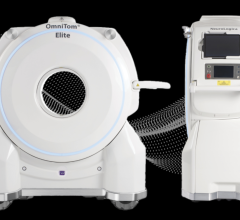May 11, 2011 – Telemis has released new software for its medical image-management system, which provides a full-featured dual-modality PET/CT viewer on any PC across any hospital using Telemis software. Upgrade is provided free with a standard software maintenance contract, and will enable healthcare institutions to reduce patient waiting times, speed up diagnosis and enhance treatment.
Dual-modality PET/CT scans combine the low-resolution functional PET imagery with the precise localization possible with a CT scan, helping specialists to identify conditions such as cancers more quickly and accurately, and to assess the progress of treatment. The latest software from Telemis greatly increases accessibility by allowing dual-modality viewing on any PC or laptop running TM-ReceptionHE. Image fusion is performed locally, allowing oncologists to adjust the images independently for optimal viewing.
Traditionally, dual modality images are inspected using an advanced visualization workstation in specialized locations such as a nuclear medicine department. The typical practice, after a PET/CT scan, is for the radiologist to compile a report for the specialist commissioning the scan, typically an oncologist working with a cancer patient. To discuss the images in depth, the oncologist must meet with the radiologist in the laboratory where a dual-modality workstation is available. The laboratory usually has few workstations, and these are in frequent use, which can introduce delays and difficulties.
TM-ReceptionHE version 4.2 now allows any PC or laptop to provide sophisticated visualization capabilities. Specialist teams can convene anywhere to discuss results and assess treatment. The physician can visualize the axial, coronal and sagittal axes in PET, CT and merged PET/CT at the same time. The viewer is highly controllable and richly featured, allowing adjustment of the transparency level to ensure optimized images when inspecting various parts of the body, such as the lung, pelvis or abdomen. The embedded tools also allow the user to inspect the Maximal Intensity Projection (MIP) and rotational MIP, and to adjust the dimension of the 3D sphere on which the SUV is calculated. Users can also access and manipulate SPECT/CT images in the same way.
For more information: www.telemis.com


 July 30, 2024
July 30, 2024 








